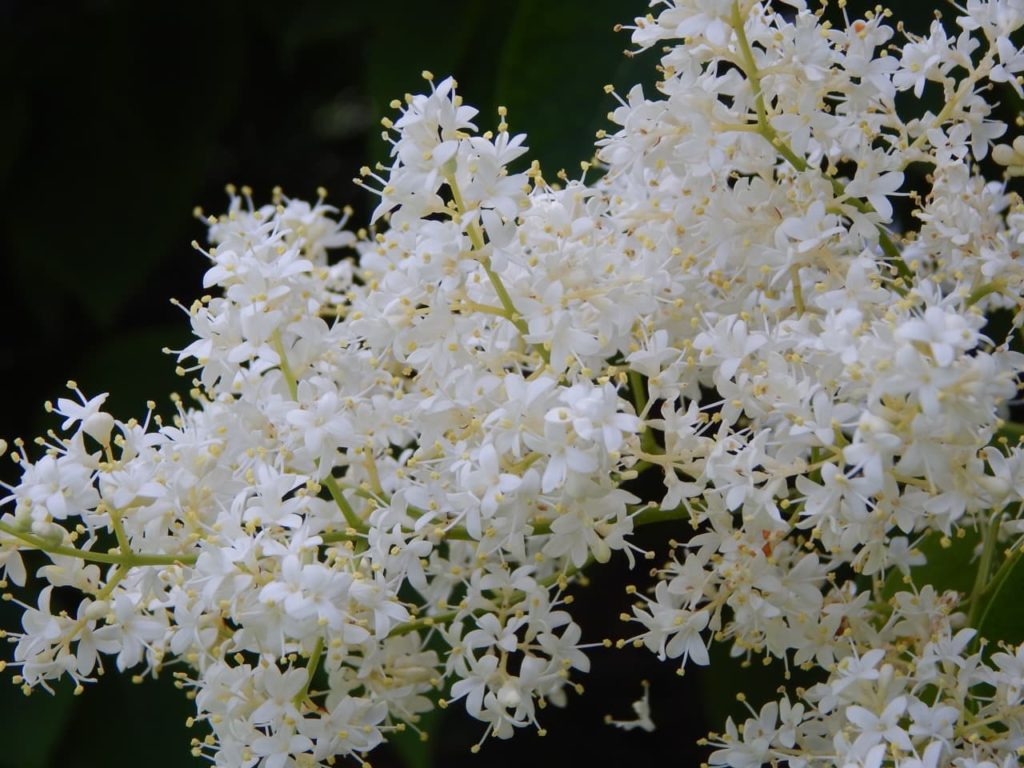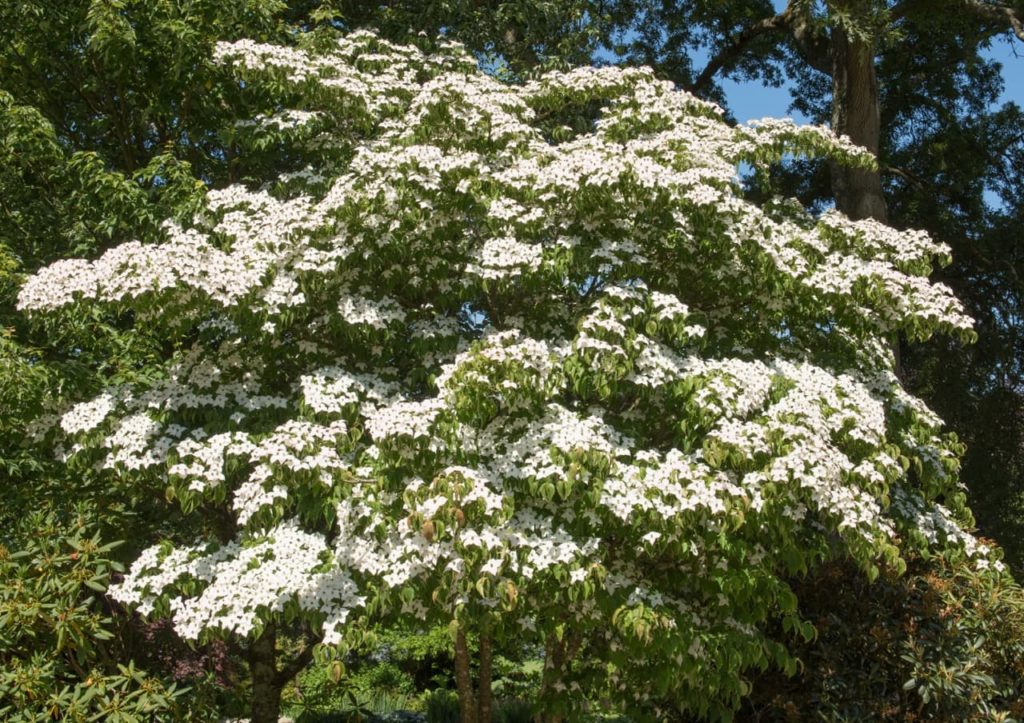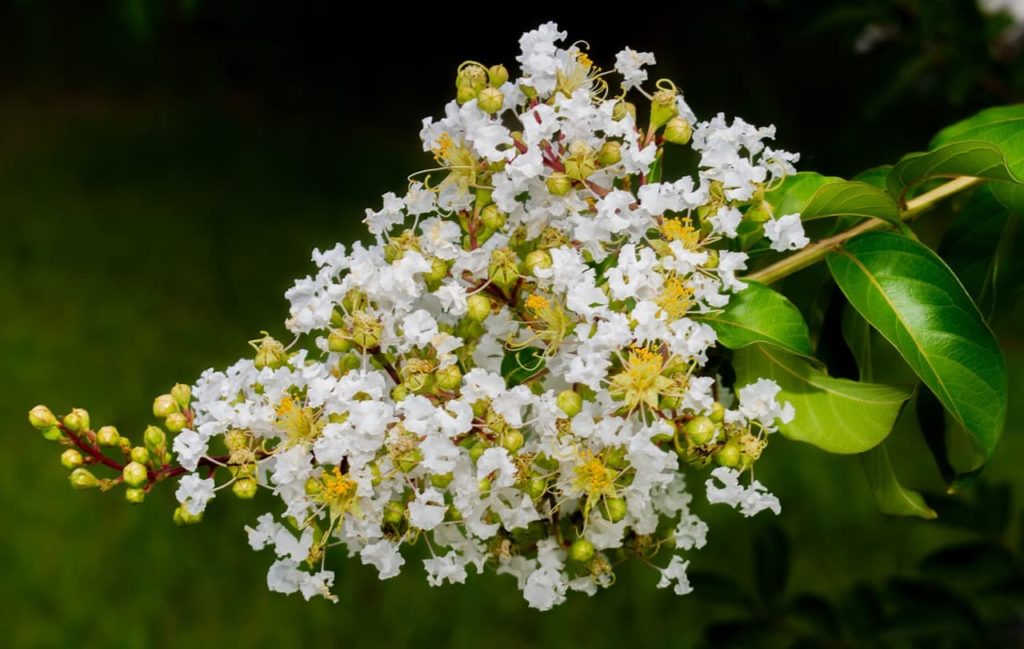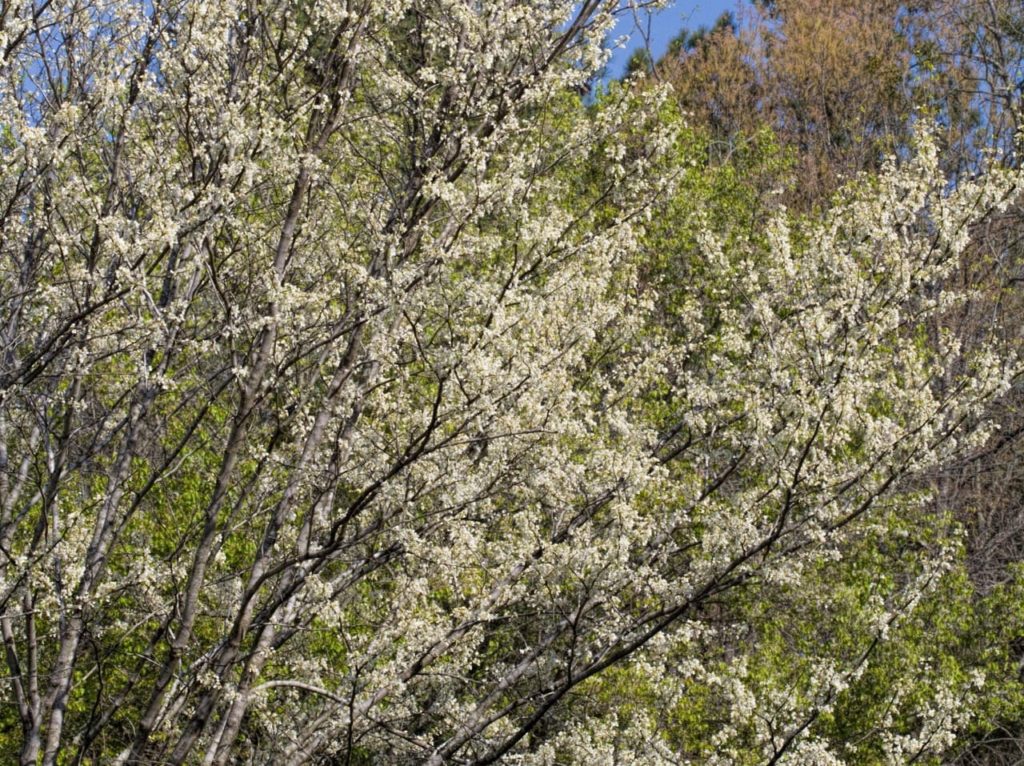10 Wonderful White Flowering Trees For Blockbuster Garden Displays

Reviewed By DAN ORI

Dan has over 27 years’ under his belt caring for plants and gardens. Working as a Horticultural Instructor and Consultant, he draws on a diverse range of experience that includes working as a Head Gardener, Tree Surgeon, Garden Centre Trouble Shooter, and writer of academic papers. Dan has a Level 3 Diploma in Horticulture and is currently a candidate for the RHS’s most prestigious award – The Master of Horticulture.
Trees with white flowers are an unmistakable focal point of any garden.
Depending on the type of tree and its surroundings, it can evoke emotions of elegance, drama or romance.
It’s no surprise then, that by planting one of the following trees from the list of recommendations I’ve compiled, you can bring some blockbuster beauty into your garden.
When selecting a tree, be mindful of its dimensions when mature, its environmental requirements and how it will integrate with your existing display.
If you get these criteria right, you are bound to have a magnificent head-turner in your space.
1) Robinia pseudoacacia

- COMMON NAME(S): black locust / false acacia
- HARDINESS RATING: H6
- FLOWERING SEASON(S): spring / summer
- EXPECTED SIZE: 20-30m in height, 10-20m spread
Despite the unpleasant connotations of its name, the Black Locust tree is a beauty to behold.
A native of North America, it has been naturalised in the UK for almost 4 centuries and copes well with our temperate climate, bringing stately grace through its clusters of white flowers in May and June, which are a magnet to bees.1Robinia pseudoacacia. (n.d.). Kew Royal Botanic Gardens. Retrieved March 27, 2023, from https://powo.science.kew.org/taxon/urn:lsid:ipni.org:names:30034699-2
Later, in autumn, its seed pods will also draw in hummingbirds.
It can grow to anywhere between 10-30m tall, though vigorous pruning will keep it in check if need be.
However, it does boast a prodigious growth rate, leading some to classify it as a weed outside of its home environment.
You should also be aware that its branches can bear sharp bracts that are capable of tearing clothes.
“This tree has a tendency to die back and drop branches, so it is best to not plant it near a path or seating area,” shares Horticultural Consultant Dan Ori.
2) Aesculus californica

- COMMON NAME(S): california buckeye
- HARDINESS RATING: H6
- FLOWERING SEASON(S): spring / summer
- EXPECTED SIZE: 8-12m in height, 10-18m spread
This medium-sized tree shouldn’t exceed more than 12m in height and can resemble a shrub due to its growth habits.
As such, it’s the perfect choice for slightly smaller spots which are simply in need of filling out.
The flowers, which burst forth every spring and last all the way through summer, are robust conical creations that are largely white in colour, but with yellow throats that turn pink later in the season.
California Buckeye trees also bear conkers and fruit.
3) Crataegus monogyna

- COMMON NAME(S): common hawthorn / hedgerow thorn
- HARDINESS RATING: H7
- FLOWERING SEASON(S): spring
- EXPECTED SIZE: 4-8m in height, 4-8m spread
Hawthorns are another medium-sized specimen, with the common hawthorn reaching a slightly smaller height than the Californian Buckeye.
Their flowers are daintier in their dimensions, with a profusion of small white blossoms appearing in spring and giving way to red berries in the summertime.
These splashes of colour, alongside the fact that the foliage on a Hawthorn tree often begins life as a reddish-brown before maturing to green, make it ideal for adding extra tones to your garden’s palette.
Like the Black Locust, it can also have spiny branches, so take care when handling it or passing nearby, and be on the lookout for signs of powdery mildew since Hawthorns are highly susceptible to this disease.
4) Catalpa bignonioides

- COMMON NAME(S): indian bean tree / catawba
- HARDINESS RATING: H6
- FLOWERING SEASON(S): summer
- EXPECTED SIZE: 10-18m in height, 6-12m spread
The Indian Bean Tree goes by many names, including the common Catalpa and the Southern Cigar tree.
Whatever you call it, it’s an impressive specimen which can grow nearly as wide as its height – up to almost 20m at full maturity in optimum conditions.
The tree is remarkable for its heart-shaped foliage and its trumpet-like blooms, which won’t blossom for the first six or seven years after planting, but should appear regularly thereafter.
They’re mostly white but do have yellow and pink ornamental colourings at their epicentre.
As they like to spread their limbs and because the petals and seedpods are prone to falling to the ground, it is advisable to plant them away from buildings and walkways.
5) Syringa reticulata

- COMMON NAME(S): japanese tree lilac
- HARDINESS RATING: H7
- FLOWERING SEASON(S): summer
- EXPECTED SIZE: 6-8m in height, 4-6m spread
One tree which is good for lining pathways is the Japanese Tree Lilac.
In my experience, this tree never exceeds 10m in height, but it’s an obedient creature and can be easily kept in line if you wish to restrict its growth further.
It also provides good density, making it an ideal screening option.
The panicles of soft, feathery flowers appear in May and ooze an exquisite aroma, which is another string to its bow.
These blossoms are complemented by the dark green foliage behind them which, along with its attractive bark and olive tree-like dimensions, makes it a highly sought-after specimen.
6) Cornus kousa

- COMMON NAME(S): kousa / Szechuan strawberry
- HARDINESS RATING: H6
- FLOWERING SEASON(S): summer
- EXPECTED SIZE: 4-8m in height, 4-8m spread
Kousa Dogwood is another tree of relatively modest dimensions, rarely surpassing 10m in height.
It also has eye-catching architecture, with its slender trunk suddenly giving way to a profusion of tangled branches, making it resemble a bouquet of flowers or a collection of balloons.
Its aesthetic qualities are at their most powerful in the summer months when the delicate flowerheads, composed of interestingly shaped white petals, cover its foliage at will.
It is disease resistant and hardy in most climates but, like others on this list, can be susceptible to powdery mildew.
7) Malus sylvestris

- COMMON NAME(S): crab apple / wild crab
- HARDINESS RATING: H6
- FLOWERING SEASON(S): spring
- EXPECTED SIZE: 8-12m in height, 4-8m spread
Crab apples are a diverse species, with cultivars available in a range of sizes and shades.
That means those gardeners in search of one which produces white flowers should have no trouble in satisfying their requirements, regardless of the space available to them.
For the best results, select one which doesn’t succumb to disease easily.
Whichever specific Crab apple you opt for, you’ll be richly rewarded with a sturdy tree that offers an intriguing triangular shape and a strong blooming habit.
As an added bonus, it also produces fruit which lasts through the year up to winter and will be a welcome source of sustenance for birds once the weather turns.
8) Lagerstroemia ‘Natchez’

- COMMON NAME(S): Natchez crape
- HARDINESS RATING: H3
- FLOWERING SEASON(S): summer / autumn
- EXPECTED SIZE: 4-8m in height, 4-8m spread
This Lagerstroemia was specifically engineered to be more resistant to powdery mildew in the US, with its name a nod to the indigenous tribes in the area of its provenance.2Gilman, E., & Watson, D. (1993, November). Lagerstroemia x ‘Natchez.’ US Forest Service. Retrieved March 27, 2023, from https://hort.ifas.ufl.edu/database/documents/pdf/tree_fact_sheets/lagxe.pdf
It will handle UK temperatures just fine, but be aware that it may not flower strongly in weaker summers.
Having said that, even a barren blooming season is not a cause for despair with a Natchez Crape.
That’s because it’s lauded for its fine architectural shape, textured bark and, best of all, the stunning collage of colours it runs through in the autumn months.
If the flowers blossom, so be it, but they’re not the be-all and end-all for this smaller option.
9) Cercis canadensis f. alba ‘Royal White’

- COMMON NAME(S): white-flowered eastern redbud ‘royal white’
- HARDINESS RATING: H5
- FLOWERING SEASON(S): spring
- EXPECTED SIZE: 4-8m in height, 4-8m spread
Another option on the smaller side, the ‘Royal White’ Redbud doesn’t usually grow past 8m, though it might reach that height in a surprisingly short time due to its vigorous growth habit.
Its pleasing architectural shape is reminiscent of a vase, which is apt because of the gorgeousness of the flowers it bears.
Interestingly, ‘Royal White’ Redbuds don’t bear flowers and foliage at the same time.
This means that when in bloom, its delicate white blossoms will completely cover its spindly branches, giving it a truly unique appearance.
Later, when these have faded, they’ll be replaced by heart-shaped leaves that are just as easy on the eyes.
10) Prunus × yedoensis ‘Somei-Yoshino’

- COMMON NAME(S): Yoshino cherry / Japanese flowering cherry
- HARDINESS RATING: H6
- FLOWERING SEASON(S): spring
- EXPECTED SIZE: 5-10m in height, 5-10m spread
Yoshino is a species of Japanese Cherry Blossom which is everything you could want and more in a tree of this kind.
It’s a knockout addition to any garden, with its foliage starting life with red hues that soften to green, whilst its flowers appear before many of its counterparts in March or April.
The subtle almond fragrance they exude completes the package.
Yoshino Cherry Trees normally grow to about 10m in height and spread and they aren’t fussy about the type of soil you give them or the diseases which try to bring them down.
They do, however, demand at least 6-8 hours of sunlight a day, so make sure your specimen is planted in an appropriate location.
References
- 1Robinia pseudoacacia. (n.d.). Kew Royal Botanic Gardens. Retrieved March 27, 2023, from https://powo.science.kew.org/taxon/urn:lsid:ipni.org:names:30034699-2
- 2Gilman, E., & Watson, D. (1993, November). Lagerstroemia x ‘Natchez.’ US Forest Service. Retrieved March 27, 2023, from https://hort.ifas.ufl.edu/database/documents/pdf/tree_fact_sheets/lagxe.pdf

